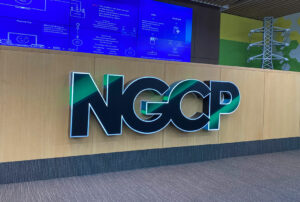THE PHILIPPINES must keep an eye on money laundering risks arising from online gaming and cryptocurrency, even after it has exited the dirty money watchdog’s “gray list,” an analyst said.
Choon Hong Chua, Moody’s head of financial crime practice group, Asia-Pacific and Middle East, said the Philippines’ removal from the Financial Action Task Force’s (FATF) gray list “reflects its commitment to strengthening its anti-money laundering (AML) and counter-terrorism financing (CTF) frameworks.”
“Exiting the gray list will boost investor confidence and financial stability. The Philippines has enhanced inter-agency coordination and has implemented comprehensive reforms,” he said.
“However, money laundering risks are not easy to sweep out entirely. Businesses such as online gaming and cryptocurrency would be areas beyond the financial sector that would require continuous oversight to mitigate potential risks,” he added.
Online gaming has gained popularity in the Philippines in recent years. Data from the Philippine Amusement and Gaming Corp. (PAGCOR) showed revenues reached a record-high P112 billion in 2024, with the electronic games sector accounting for half or P48.79 billion.
The FATF finally removed the Philippines from its gray list of jurisdictions under increased monitoring for dirty money following a successful on-site visit that showed the country completed its action plan.
The Philippine government is confident the removal from the gray list will help raise investments and expand trade partnerships that will drive economic growth.
However, a Citi economist said the exit from the gray list alone is not enough to spur investments in key sectors like manufacturing.
“Obviously, it’s great to be out of the gray list, but I don’t think this is necessarily going to translate to meaningful diversion opportunities in manufacturing because clearly it takes a lot more than that,” Citi Head of Emerging Markets Economics Research Johanna Chua said in an interview on Money Talks with Cathy Yang on One News on Monday.
The Philippines was on the FATF’s gray list for over three years or since June 2021.
“It’s great to get out of the gray list, but we need more than that to have a kind of ecosystem for manufacturing, including having a better-established infrastructure and supply-chain ecosystem,” Ms. Chua said.
“That’s obviously not a competitive advantage for the Philippines. The Philippines is really more for services,” she added.
The Philippines logged $37.4 billion worth of services exports in the first nine months of 2024, up 6.25% from a year earlier, central bank data showed.
In 2024, exports of services jumped by 8.3%, data from the local statistics authority showed. It also accounted for 13% of gross domestic product (GDP).
Ms. Chua cited India as an example, where there have been significant public capital expenditures for infrastructure seen in the last few years.
The government has committed to spending 5-6% of GDP on infrastructure annually.
Meanwhile, former Finance and Socioeconomic Planning Secretary Jesus P. Estanislao said the Philippines’ exit from the gray list is a “very positive development.”
“It has been a great embarrassment for the Philippines to be on that list for so many years. And now what we’re saying to the rest of the world is we want to be part of you, and we do not want to be part of the money laundering, financing or criminal activities.”
“We would like to clean up our system, and I’m glad that we have succeeded in convincing them in our efforts to clean up our system. This is great news,” he said.
This also shows that the Philippines is becoming a “much more transparent economy.”
“We’re telling the world we would like to be part of the global financial system, which fights against financing for terrorism, which fights against money laundering, and all of the shenanigans that have been going on using the international financial system,” Mr. Estanislao added.
TARIFFSMeanwhile, Ms. Chua said the Philippines is among the economies most insulated by the United States’ tariff plans.
“In Asia, you know, I think the Philippines is kind of second to India in being relatively the most insulated from the tariff noise. One of the benefits India has is there’s been a lot of interest in diversion of investments in manufacturing,” she said.
Markets are bracing for the potential impact of US President Donald J. Trump’s trade policies, such as reciprocal tariffs on all countries that tax US imports.
Since taking office in January, Mr. Trump has already slapped a 10% tariff on Chinese goods as well as duties on all steel and aluminum imports beginning March.
“A lot of the tariff noise, aside from China, seems a lot more sectoral and targeted and is really being seen as a pretext for negotiation,” she added.
Meanwhile, Ms. Chua said it is “not far-fetched” for the Philippines to grow close to 6% this year.
“We are projecting Philippine growth will be just a tad shy of 6%, which is 5.9%, which, you know, by and large, is still a very solid growth rate that we’ve seen compared to a lot of emerging market countries,” she added.
Economic managers are targeting 6-8% GDP growth this year.
The Philippine economy grew by 5.6% in 2024, short of the government’s 6-6.5% target. — Luisa Maria Jacinta C. Jocson






